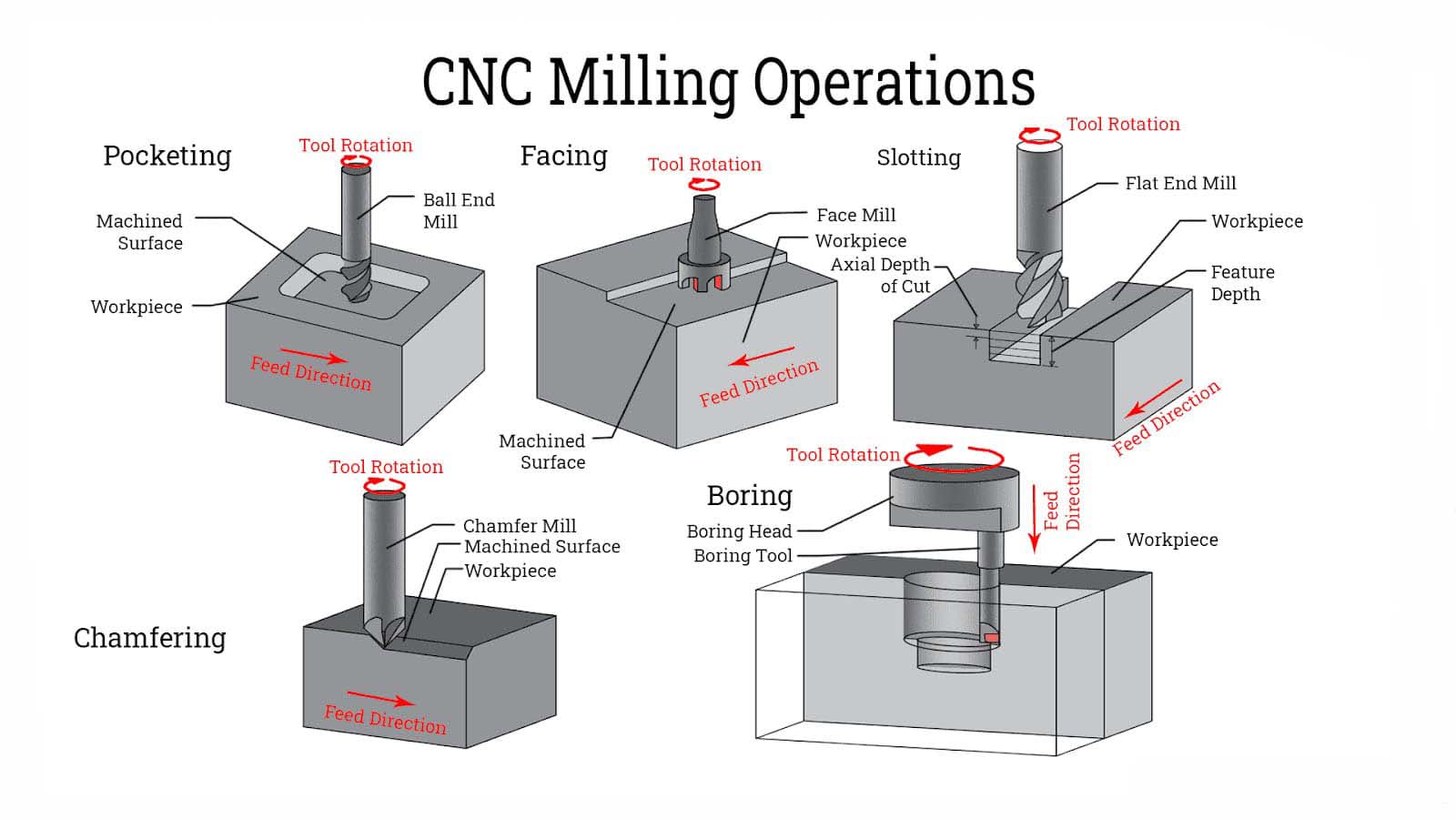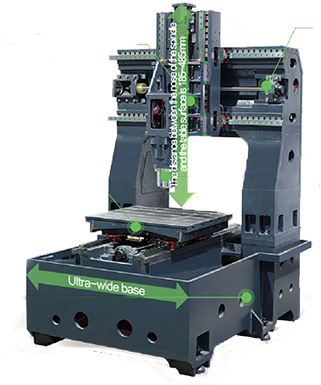In the intricate world of precision machining, CNC milling emerges as a powerful force, allowing the creation of complex components with unparalleled accuracy. As industries advance, the pursuit of maximizing output in CNC milling operations becomes not just a goal but a necessity. This article delves into an extensive exploration of advanced techniques, strategies, and cutting-edge technologies that elevate CNC milling to the level of mastery. This journey goes beyond mere efficiency, aiming to orchestrate a harmonious blend of precision and productivity.
Efficiency in CNC milling is intricately linked to the selection of the right tools. Beyond basic end mills, delve into the realm of high-speed steel (HSS) and carbide end mills. These tools provide enhanced durability and precision, enabling CNC mills to execute intricate cuts with ease. Explore the world of specialized coatings, such as Titanium Aluminum Nitride (TiAlN), to not only extend tool life but also to maintain the sharpness crucial for precision machining.

To truly maximize output, high-speed machining takes center stage. Upgrade CNC mills with state-of-the-art spindle technologies and cutting-edge software to operate at speeds that were once considered unattainable. High-speed machining not only accelerates production but also contributes to superior surface finishes, optimizing overall output.
Implement constant chip load strategies to maintain a consistent cutting engagement even at high speeds. This not only optimizes tool efficiency but also contributes to sustainable machining practices. Understanding and implementing these strategies in CNC milling operations ensure not only rapid production but also extend tool life.
Incorporate aerostatic spindle technology to minimize friction and heat during high-speed machining. This advanced technology enhances precision by minimizing thermal variations, ensuring that CNC milling operations maintain accuracy even at accelerated speeds.
Transitioning from traditional three-axis milling to multi-axis machining is pivotal for unlocking new dimensions of complexity. Embrace the versatility of simultaneous five-axis CNC milling, enabling the production of intricate geometries in a single setup. This not only reduces machining time but also enhances output by minimizing manual interventions.
Optimize toolpaths through programmed toolpath indexing. This ensures seamless transitions between tools, minimizing indexing times and enhancing the overall efficiency of CNC milling operations. The strategic arrangement of tools reduces tool change times, contributing to continuous machining flow.
Invest in advanced Computer-Aided Manufacturing (CAM) software designed for multi-axis machining. These tools enable operators to create intricate toolpaths with precision, ensuring that the CNC mill maneuvers seamlessly in multiple axes to produce complex components with accuracy.
Adaptability is the heartbeat of maximizing output. Implement adaptive machining strategies that empower CNC mills to adjust cutting parameters in real-time. This dynamic approach considers variables such as tool wear, material inconsistencies, and machine conditions, ensuring continuous efficiency without sacrificing precision.
Integrate tool condition monitoring systems that provide real-time data on tool wear. Proactive maintenance based on this information reduces unexpected downtime, enhances tool life, and ensures consistent machining precision.
Utilize dynamic speed and feed optimization algorithms that analyze cutting conditions in real-time. This flexibility in machining parameters guarantees high precision across varying workpiece materials and geometries.
Stability during milling operations significantly impacts output quality. Integrate smart workholding solutions, such as vacuum clamping or magnetic chucks with sensor feedback. These systems dynamically adjust gripping forces based on real-time measurements, enhancing stability and minimizing setup times.
Implement quick-change workholding systems that facilitate rapid setups. These systems allow for efficient transitioning between different workpieces, reducing idle times and increasing overall CNC milling productivity.
Incorporate collaborative robots (cobots) for efficient material handling and workpiece loading and unloading. Cobots can work alongside human operators, enhancing overall operational efficiency and ensuring a smooth flow of materials during CNC milling operations.
Fine-tune the art of CNC milling by utilizing advanced toolpath optimization algorithms. These algorithms streamline cutting routes, minimizing air cutting, and optimizing chip evacuation. A well-optimized toolpath ensures a smooth and uninterrupted milling process, ultimately maximizing output.
Explore trochoidal milling strategies for efficient pocketing. This technique involves milling in a rounded, continuous path, reducing tool wear and optimizing material removal rates. Implementing trochoidal milling in CNC operations enhances efficiency, especially when dealing with pocketing and slotting processes.
Incorporate spiral toolpaths for contouring operations. This technique involves continuous, smooth tool movements along the contours of a workpiece, minimizing abrupt changes in direction. Spiral toolpaths not only enhance precision but also contribute to efficient material removal, maximizing output in CNC milling operations.
Efficiency should never come at the expense of quality. Incorporate in-process inspection technologies, such as probing systems and laser measurement devices. Real-time inspection during milling operations ensures that components meet specifications, reducing errors and minimizing the need for rework.
Implement closed-loop feedback systems that integrate inspection data with the CNC milling control system. This real-time feedback loop enables the machine to make precision corrections during the machining process, ensuring that deviations from specifications are addressed immediately.
Enhance the accuracy of CNC milling operations from the outset by incorporating automated tool presetting systems. These systems accurately measure and set tool offsets, minimizing setup times and ensuring that each tool is precisely aligned before machining begins.

Before the first physical cut is made, leverage CNC milling simulation software for virtual precision prototyping. This proactive approach allows operators to visualize and optimize milling processes in a risk-free environment. Simulation software identifies potential issues and refines toolpaths, ensuring a flawless execution when transitioning to physical production.
Simulate the behavior of materials under milling conditions to achieve a realistic virtual environment. Realistic material simulation allows operators to predict how different materials will react to the cutting process, aiding in the selection of appropriate tools and machining parameters for optimal efficiency.
Incorporate thermal simulation to model the heat generated during milling operations. Understanding thermal variations is crucial for maintaining precision, especially during prolonged machining. Thermal simulation enables operators to anticipate and address heat-related issues, ensuring consistent accuracy in CNC milling.
Before sending the program to the CNC mill, the simulation software rigorously verifies the integrity of the machining program. This step ensures that the generated G-code is error-free and compatible with the CNC milling machine's capabilities. Rigorous verification minimizes the risk of programming errors, reducing the likelihood of scrapped parts and enhancing overall operational efficiency.
Simulation software provides accurate estimates of machining time and associated costs. This information is invaluable for production planning, allowing operators to allocate resources efficiently. Accurate time and cost estimations contribute to a well-organized production schedule, optimizing both time and resources.
Optimize virtual toolpaths within the simulation environment. Fine-tune cutting strategies, speeds, and feeds to achieve optimal efficiency. Virtual toolpath optimization allows operators to experiment with different parameters and select the most effective combination for specific milling operations.
Welcome to the era of smart manufacturing by integrating IoT devices and Industry 4.0 principles into CNC milling operations. Real-time data exchange, predictive maintenance, and remote monitoring enhance efficiency, ensuring continuous production with minimal downtime.

Leverage IoT devices for remote monitoring of CNC milling operations. Real-time data on machine performance, tool wear, and production status can be accessed remotely. This proactive approach enables operators to make informed decisions based on predictive insights, minimizing unplanned downtime and optimizing overall output.
Implement predictive maintenance algorithms fueled by IoT data. Continuous monitoring of machine conditions enables the prediction of potential failures before they occur. This predictive approach minimizes unplanned downtime, extends the lifespan of critical components, and sustains peak performance in CNC milling operations.
Harness the power of data-driven decision-making through advanced analytics. Analyze the data collected from CNC milling operations to identify patterns, optimize processes, and enhance overall efficiency. Smart data utilization leads to more informed decision-making, contributing to continuous improvement in output.
Maximizing output requires skilled operators at the helm. Invest in comprehensive training programs that familiarize operators with CNC milling controls, programming intricacies, and advanced features. Skilled operators are essential for leveraging the full potential of CNC milling machines.
Enhance operator training with virtual reality (VR) simulations tailored for CNC milling. Immersive learning experiences allow operators to practice in a virtual environment, honing their skills and gaining confidence before engaging with live CNC milling operations. VR training simulations accelerate the learning curve and contribute to efficient skill development.
Foster a culture of continuous learning among CNC milling operators. Encourage them to stay updated on the latest advancements, attend training sessions, and participate in skill development programs. A workforce that embraces continuous learning evolves with technology, ensuring that CNC milling operations are always at the forefront of efficiency and precision.
In the ever-evolving landscape of CNC milling, mastering the art becomes a continuous journey. Maximizing output involves a symphony of advanced tooling, high-speed machining, adaptability, smart technologies, and skilled operators. By incorporating these strategies, CNC milling transforms into a precision-driven powerhouse, ensuring not just efficiency but a mastery that defines the pinnacle of productivity.
As industries continue to push boundaries, the mastery of CNC milling becomes a competitive edge. Embrace the advancements discussed, elevate your CNC milling operations, and maximize output in the journey towards precision excellence.